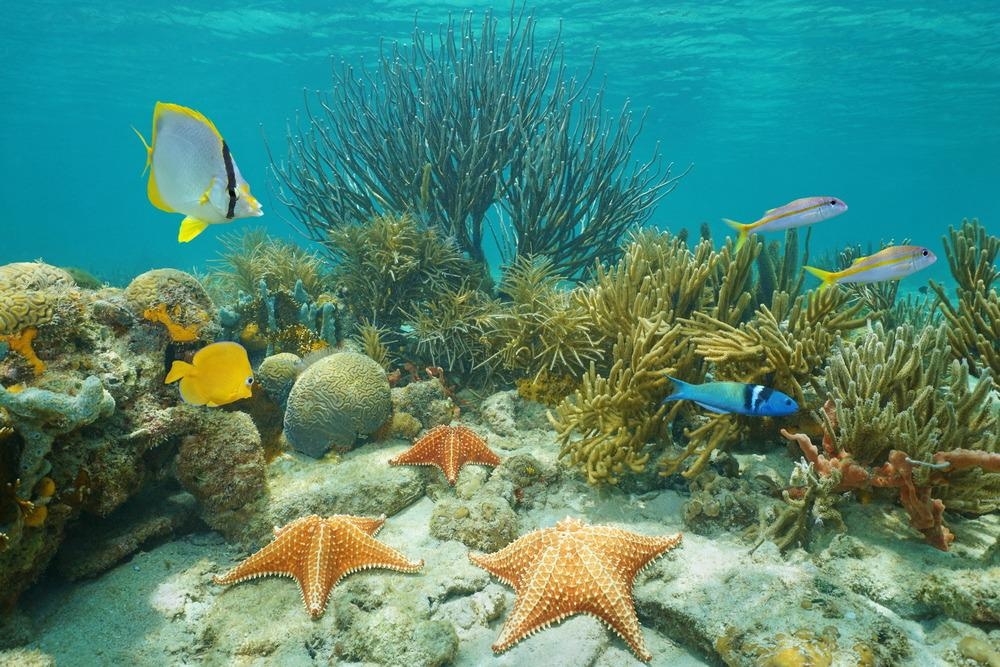As we loosen our dependence on fossil fuel cars, power plants, and factories, with the green revolution upon us, this will increase the demand for key minerals and metals such as cobalt, nickel and manganese and copper for the electric cars, batteries, and wind turbines which all depend on these materials. Mining companies have plans to use robots to extract these metals from below various parts of the ocean floor but the environmental implications of doing so need to be considered.

Image Credit: Damsea/Shutterstock.com
Minerals are needed to drive the green revolution and to create more electric car batteries and wind turbines. However, a report from the International Energy Agency (IEA) warns of the limited availability of the natural materials needed for green energy. To extract minerals in the required quantities will involve deep-sea mining.
This subject is controversial, though the alternative would be to mine on land where there could be environmental problems such as sinkholes, pollution soils and groundwater systems, and disturbing wildlife habitats. This is said to build the case for mining the deep seabed, though is it really the environmentally friendly solution?
Today, the data shows a looming mismatch between the world’s strengthened climate ambitions and the availability of critical minerals that are essential to realising those ambitions.
Dr Fatih Birol, The IEA Executive Director
Conservationists and scientists argue that tampering with large parts of the ocean floor would destroy slow-growing sea life, along with swathes of toxic sediments that would be scooped up from deep on the ocean floor by deep-sea remotely operated vehicles (ROVs) that would gain samples from drilling and cutting into the seafloor to check for metals. Two main technologies used would include the continuous line bucket system (CLB) and hydraulic suction systems.
Deep-Sea Mining Risks
Hydrothermal vents are key sources for deep-sea mines, in particular their ‘chimneys’. The magma below causes metals to leach into the water. The cold-water shock causes solidification around the vents. Here, there are unique, fragile ecosystems, including the ghost octopus, with many species yet to be discovered. The PEW charitable trusts state that 90% of species that researchers collect are new to science, but the disturbed sediment dredged up by mining processes could disturb their intake of food.
There is a slight advantage that less material will need to be processed compared to mining on land, due to high concentrations of minerals in these deep-sea sites. Though whether it is still worth the risk of damaging the biodiversity of the deep sea is a heavily debated question. According to MIT, the first step is to ensure that the sensitive ecosystems are protected and minimize the negative environmental impacts of the mining operations.
Mining the Deep Sea
Video Credit: Massachusetts Institute of Technology (MIT)/YouTube.com
Reducing Environmental Impact
Building green technology without causing environmental problems is a major issue. Simply ignoring the minerals offered at depth would prevent harm to remote habitats of endemic species where there has been little disturbance for thousands of years. On the other side of the coin, mining companies argue that we need these materials to help us reach net zero emissions by 2050, while we invest further in green technologies.
What can be done is to minimize environmental risk by informing decision makers about the ecology of the seabeds that are of interest to mining companies. Environmental impact reports should be comprehensive, along with mining plans and risk mitigation processes for pollution caused. Some studies suggest that there may be ways of lowering environmental risk by ensuring that mining the seabed happens very efficiently. Mining companies will also need to uphold standards for the extraction and trade of minerals at a sustainable and responsible level.
Authority to Uphold Standards
The International Seabed Authority (ISA) outlined its contribution to preventing environmental harm in its Action Plan published in September 2021. One of its key strategic directions is to “Develop scientifically and statistically robust monitoring programmes and methodologies to assess the potential risk for activities in the area to interfere with the ecological balance of the marine environment.”
This will involve extensive ecological assessments and the development of regulations, procedures, monitoring programs, and methodologies to prevent, reduce and control pollution as well as other hazards to the marine environment and ecology. Additional aims are to assess the ecology of the deep-sea environment extensively and openly disseminate the information while maintaining good relationships with stakeholders.
Conservationists argue, with the unknowns of the deep-sea ecosystems at depth, good mining practices and authoritative regulations may not be enough.
References and Further Reading
The observer view on the pros and cons of deep-sea mining [Online]. The Guardian. Available at: https://www.theguardian.com/commentisfree/2021/aug/29/the-observer-view-on-the-pros-and-cons-of-deep-sea-mining
Race to the bottom: the disastrous blindfolded rush to mine the deep sea [Online] The Guardian. Available at: https://www.theguardian.com/environment/2021/sep/27/race-to-the-bottom-the-disastrous-blindfolded-rush-to-mine-the-deep-sea
The role of critical minerals in clean energy transitions [Online]. International Energy Association. Available at: https://www.iea.org/reports/the-role-of-critical-minerals-in-clean-energy-transitions
Analyzing the promise of Deep Sea Mining [Online]. MIT. Available at: http://web.mit.edu/12.000/www/m2016/finalwebsite/solutions/oceans.html
Herrington, R (2021) Mining our green future. Nat Rev Mater 6, 456–458. https://www.nature.com/articles/s41578-021-00325-9
The renewable energy transition has companies looking out to sea [Online]. Market Place. Available at: https://www.marketplace.org/2021/09/27/renewable-energy-transition-has-companies-looking-out-to-sea/
Sea: The Clarion Clipperton Zone [Online]. PEW Trusts. Available at: https://www.pewtrusts.org/-/media/assets/2017/12/sea_the_clarion_clipperton_zone.pdf
Action Plan [Online]. International Seabed Authority. Available at: https://www.isa.org.jm/
Disclaimer: The views expressed here are those of the author expressed in their private capacity and do not necessarily represent the views of AZoM.com Limited T/A AZoNetwork the owner and operator of this website. This disclaimer forms part of the Terms and conditions of use of this website.